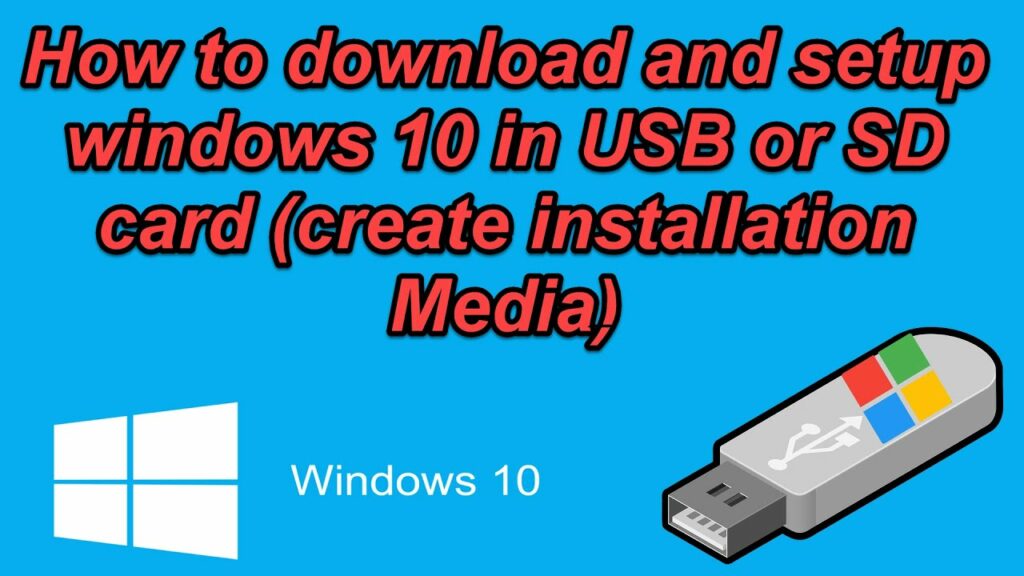Extending Storage Horizons: A Comprehensive Guide on How to Install Windows 10 Apps to an SD Card or USB Drive

Introduction:
Windows 10, Microsoft’s versatile operating system, provides users with the flexibility to customize their computing experience in various ways. One notable feature is the ability to install apps not just on the internal storage but also on external devices like SD cards or USB drives. In this extensive guide, we will explore the intricacies of extending your storage options by installing Windows 10 apps to an SD card or USB drive. This not only optimizes your device’s internal storage but also allows for greater mobility and flexibility in managing your applications.
Understanding the Benefits of External Storage for Apps:
- Increased Storage Capacity:
- External devices such as SD cards and USB drives offer additional storage space, allowing users to install more apps without burdening the internal storage of their devices.
- Portability and Flexibility:
- Installing apps on removable media makes it easier to carry your favorite applications with you, allowing you to use them on multiple Windows 10 devices seamlessly.
- Optimized Internal Storage:
- By offloading apps to external storage, you free up internal storage space for system processes and essential applications, contributing to improved device performance.
- Data Security and Backups:
- External storage devices can be easily backed up, providing an additional layer of security for your applications and data.
Methods to Install Windows 10 Apps to an SD Card or USB Drive:
Windows 10 doesn’t offer a built-in option to install apps directly to external storage by default. However, users can leverage a workaround using the Windows Settings and PowerShell. The following steps outline the process:
Method: Using Windows Settings
- Insert External Storage:
- Insert your SD card or USB drive into an available port on your Windows 10 device.
- Open Windows Settings:
- Press “Windows key + I” to open the Settings app.
- Navigate to Storage Settings:
- In the Settings app, select “System” and then “Storage.”
- Choose Default App Installation Location:
- Scroll down to the “More storage settings” section.
- Under “New apps will save to,” use the dropdown menu to select your external storage device.
- Confirm the Changes:
- Windows will prompt you to move existing apps to the new location. Confirm your choice to move them.
Method: Using PowerShell
Warning: Using PowerShell involves entering commands that can affect your system. Follow the instructions carefully, and double-check your inputs to avoid unintended consequences.
- Open PowerShell with Administrator Privileges:
- Right-click on the Start button and choose “Windows PowerShell (Admin)” or “Command Prompt (Admin).”
- Check Existing App Install Location:
- Enter the command
Get-AppxPackage -AllUsers | Select Name, PackageFullName, InstallLocationto view the current install location of apps.
- Enter the command
- Change the Install Location:
- Enter the command
Move-AppxPackage -Name "AppName" -Destination "D:\Folder"to move a specific app to the desired location on your external storage. Replace “AppName” with the name of the app and “D:\Folder” with the path on your external storage.
- Enter the command
- Verify Changes:
- Confirm that the app has been moved by checking its new install location using the previous command.
Considerations and Additional Tips:
- App Compatibility:
- Not all apps can be moved to external storage. Some apps, particularly system-related ones, need to remain on the internal storage for proper functioning.
- Formatting External Storage:
- Ensure your SD card or USB drive is formatted with the NTFS file system to support app installations.
- Speed of External Storage:
- Consider using a high-speed and reliable external storage device to ensure optimal performance, especially for resource-intensive applications.
- Device Policies and Permissions:
- Ensure that your device allows app installations on external storage, and you have the necessary permissions.
- Regularly Check App Install Locations:
- Periodically check the install locations of your apps to manage storage effectively and troubleshoot any issues.
- Community Forums and Discussions:
- Engage with Windows 10 community forums and discussions to stay informed about updates, tips, and potential issues related to installing apps on external storage.
Conclusion:
Installing Windows 10 apps to an SD card or USB drive is a powerful customization that provides users with increased storage capacity, flexibility, and improved device performance. By following the comprehensive methods outlined in this guide, users can confidently extend their storage horizons and make the most of their Windows 10 experience. Embrace the flexibility of external storage, optimize your device’s internal space, and enjoy a seamless computing experience with your favorite applications, all at your fingertips. Windows 10 is not just an operating system—it’s a platform that adapts to your needs, offering a world of customization possibilities for an enhanced digital journey.




